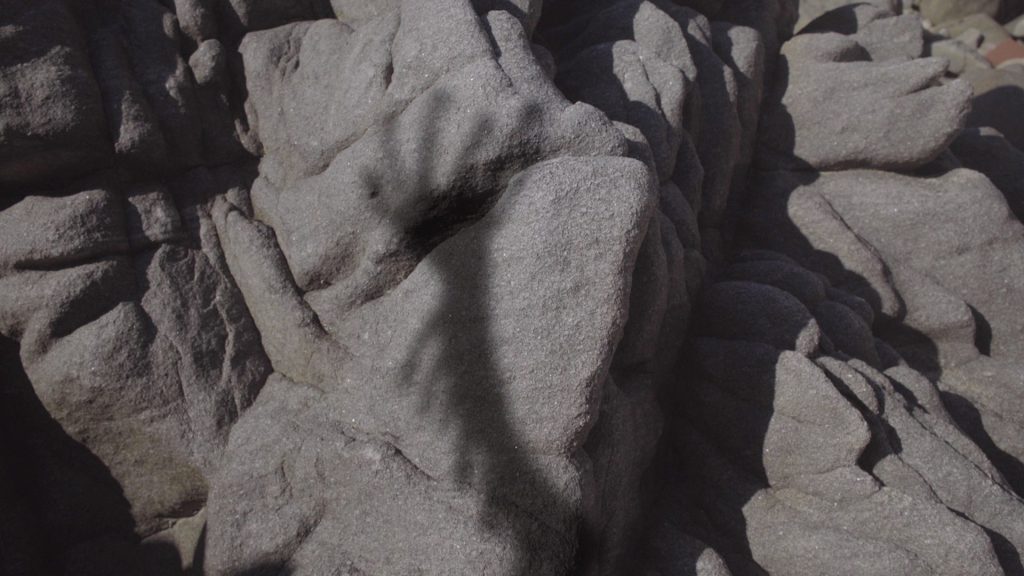
Van Do
Watching different films by the same filmmaker (especially if it’s done chronologically) feels like a prolonged conversation, each time a revelation. The Still Side is not the first film by Miko Revereza I’ve watched (except that this film is co-directed with his partner Carolina Fusilier). Earlier, I saw another short film by Miko Revereza called Distancing in this year’s Seashorts, in a program curated by Chris Fujiwara. With each work, you get to know better a person—his ways of seeing, his state of being, his influences. I am first drawn to Miko Revereza’s work(s) because of their writerly, visually and textually poetic, stream-of-consciousness quality, especially shining through in the pacing of his spoken words and his free association of references. Another element I’ve picked up in his approach to his filmmaking is his ability to turn real-life situations into art, in a way, embracing life with all its flaws and unpredictability, or in Miko’s words, “playing things by ear.”
The Still Side was born in Mexico out of a strange circumstance of our time: travel bans started to take effect in the Philippines, where Miko Revereza was based then, at the moment he flew to Vancouver for an artist residency, just to find out upon arrival that the residency had been turned online. Stuck in limbo as he couldn’t return to the Philippines nor could he stay in Vancouver, he decided to fly to Mexico, where Carolina Fusilier is based. What at first seems like an unfavorable situation was turned into an opportunity for collaboration of two artistic visions, between a visual artist and an experimental filmmaker. Indeed, what ends up as we see in The Still Side is a nice fusion of the best of both worlds: it’s as if Carolina Fusilier’s eye for the aesthetics of structure, space, and composition is merged with Miko Revereza’s poetics of narrative-making, sound design and quirky syntax of intertextual referencing. And of course their artistic luggages are in no way exclusive of one another, as I can imagine how their interests, inclusive of both similarities and differences, must have informed and complemented the process of exploration in the making of the film. In a similar vein of birthing art from life, Distancing was made as response to Revereza’s decision to leave America for the Philippines, which would potentially ban him from coming back for 10 years as he was to embark on this one-way, self-exiled journey. The film thus bids a fond, nostalgic farewell to a place that both raised him and denied his existence.
In his films we see lots of movements: physical, mythological, technical, political, poetical. His itineraries—across the United States, from the United States to the Philippines, from the Philippines to Mexico—somehow informed and gave form to his films. Through the medium of the moving image, he time and again returns to explore with great poignancy the differing connotations of displacement and exile. In his recent interview on the Criterion channel, he said, “It was important for me to realize that the style of the camera movement is so connected to my body—my policed body—moving through the United States.” This statement was made in direct reference to his feature film, No Data Plan. But it seems to me that the style of camera movement is of equal significance for investigating the aesthetic and conceptual endeavors of Distancing and The Still Side.
Distancing was shot mostly handheld, from which the breaths, points of view, and attention of the camera operator (Miko himself) might be told. With this film, we are given so much intimacy with the people and reality in front of the camera. Shaky and at times out-of-focus, these handheld movements render the camera into a body with its own physical conditions and mental state. This body is indeed breathing hard and is emotionally shaken by watching the life of his grandfather on the verge of passing by. This choice of camera style seems fit also because the filmmaker is making a closer study of this perplexing identity suddenly made anew. If the cameras behind The Still Side are also a person, they must be much calmer, more measured, but no less thoughtful in grasping a much larger, more foreign landscape. With static frames and slow pans sometimes, the cameras move effortlessly across different heights, sizes and depths of the island of Capaluco — inside the architectural aesthetics of an abandoned resort in Mexico, beneath the waves of the sea, beyond the transparent sky, into the polyphonous jungle, around the remnants of so-called civilizations. The regular shift of shot sizes, as well as the well-designed soundscape of the film, allows us viewers to be fully immersed in a setting characterized by the prosperity of non-human beings, such as flora and fauna, insects, sea creatures, and perhaps ghosts that inhabit the island. All at once, it’s like we are transferred into the bodies of outer space explorers landing upon Earth in 10,000 light-years’ time and those of microorganisms tiptoeing across the dead bodies of sea and forest creatures.
In The Still Side, the filmmakers see no boundary in moving between fiction and documentary, between myth and reality. Siyokoy, a Filipino migrant sea creature crossing the ocean from the Philippines to arrive at Mexico, is layered in the narrative of the film, but we never actually see it on screen. Capaluco, the name of the fictional island in The Still Side, is based on the Mexican coastal resort city Acapulco. This is how the filmmakers like to play with their imagination, as it breathes mystery and life into a space (in actuality) full of absence and emptiness.
![ドキュ山ライブ! [DOCU-YAMA LIVE!]](http://www.yidff-live.info/wp-content/themes/yidff-live_2017/images/header_sp_logo1.png)

